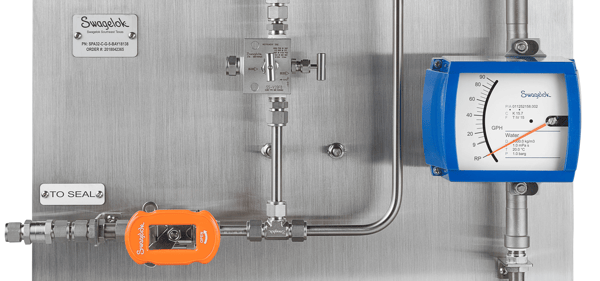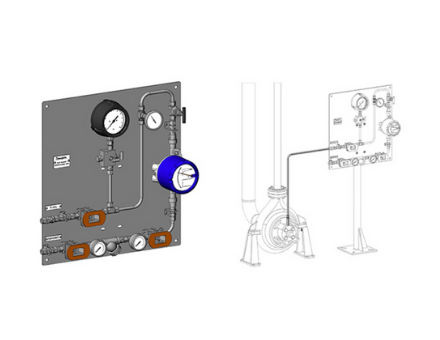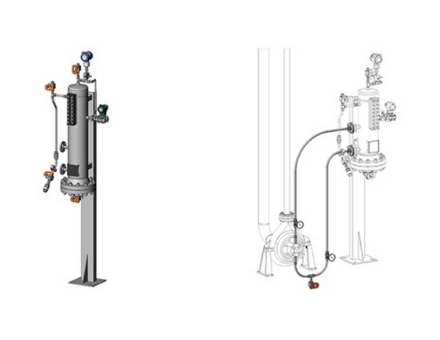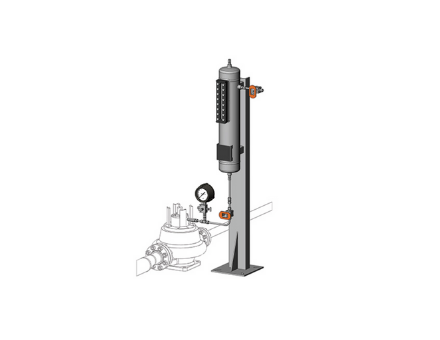When Bay Area refineries have to tighten their belts, the first place to look for cost savings is mechanical seal failure. When it happens, the impact is more than just the price tag of pump seal replacement. You’ll likely have to pay for bearing replacement, shaft rebalancing, or other pump rebuild costs, not to mention the costs of unplanned downtime. These costs are especially tough to swallow considering mechanical seal failure is usually avoidable.
The best way to get ahead of the problem is by preventing it from occurring in the first place with good preventative maintenance practices. Seal support systems are especially important to ensure a pump’s mechanical seals are kept cool and well-lubricated. Seal support system failure usually means mechanical seal failure requiring pump seal replacement. A properly functioning seal support system also helps protect the mechanical seal from damage if other problems occur in the system.
Keeping seal support systems in good working order is one of the most important ways to protect your mechanical seals and reduce the maintenance costs of your rotating equipment. Follow these best practices to ensure a long pump life with lower maintenance costs, less downtime, and fewer pump seal replacements.
Check Seal Support Systems to Avoid Costly Pump Seal Replacement
Mechanical seals and their seal support systems are critical to keeping pumps working efficiently and preventing leaks, which is why there are so many double mechanical seal systems in Bay Area refineries. Leaks can lead to fires, personnel exposure, and fines—none of which are acceptable in a modern refinery.
To keep seal support systems running smoothly, engineers must take a proactive approach to address any potential problems early, and there can be a lot to check. Here are the main areas to put on your rotating equipment and seal support systems inspection checklist:
Flow
| Problem |
There is no reliable way to verify the seal system is delivering sufficient flow to the seal chamber. |
| Effects |
Insufficient flow will lead to heat checking, blistering on the seal faces, coking, and eventual seal failure. |
| Solution |
Install proper instrumentation to verify flow and/or pressure, and ensure it is inspected and calibrated regularly. |
Cooling
| Problem |
The seal support system does not sufficiently cool the seal. |
| Effects |
Just as with poor flow, insufficient cooling will lead to heat checking, blistering, or coking and eventual seal failure. |
| Solution |
A gradual decrease in performance may indicate scaling in external coolers requiring cleaning or replacement. If cooling performance has always been a problem, the cooler may be undersized and need upgrading. |
Instrumentation
| Problem |
Instrumentation to measure variables like flow, pressure, and temperature either does not work properly or is not installed. |
| Effects |
You can’t fix a seal support system problem if you aren’t aware of it. It will eventually result in a surprise failure—and costly unplanned downtime. |
| Solution |
Schedule regular testing and preventative maintenance by a qualified seal support system vendor to make sure instrumentation is in good working order. |
Lubrication
| Problem |
The seal support system fails to deliver adequate barrier or buffer fluid lubrication to the moving parts of the mechanical seal. |
| Effects |
Insufficient lubrication generates excess heat, and heat checking will develop on the seal faces. The seal will eventually fail.
|
| Solution |
Verify with your local vendor that the buffer or barrier fluid is suitable for current service. If not, a fluid upgrade may be necessary. |
Fluid Compatibility
| Problem |
The barrier or buffer fluid is incompatible with the process fluid or seal materials. |
| Effects |
Incompatible fluids lead to heat and seal damage like heat checking, coking, and eventual failure. |
| Solution |
Verify the compatibility of your barrier/buffer fluids with your process fluids and system parameters. You may also need to change barrier/buffer fluids or upgrade seal support systems to keep up with changing process fluids. |
Leak-Tightness
| Problem |
You’ve detected a leak in a mechanical seal, or there is a history of ongoing leaks that have not been addressed. |
| Effects |
At the worst, you’re looking at a potential fire or exposing personnel to hazardous chemicals. |
| Solution |
Regular maintenance on your seals and seal support systems should prevent major leaks. If the current system isn’t working properly, you may need a new seal support system assembled. |
Barrier Fluid Choice
| Problem |
Many legacy systems use water as a barrier fluid because it’s cheap. Water is decent at heat removal but is typically a poor lubricant. |
| Effects |
Lubrication may be inadequate, and heat checking is a common result. |
| Solution |
There are many modern, engineered fluids that can help lower pump operating costs. Discuss with your vendor to find the best one for your system. |
There’s a lot to check for around your seal support systems, but the effort is worthwhile. A well-performing seal system will delay pump seal replacements and help prevent potentially expensive or dangerous failures.
The right vendor can help evaluate your systems and put in place risk-mitigating measures. Don’t think of your seal support system vendor as just another part supplier—they should also be a partner in your preventative maintenance efforts.
The Best Seal Support System Partner in the Bay Area

Swagelok Northern California has an expert team ready to help evaluate your seal support systems and ensure they are functioning optimally. Whether it’s just a review, a minor instrumentation upgrade, or a complete seal support system replacement fabrication and assembly, no seal support system project is too large or too small.
Our Northern California team can be onsite or available by virtual appointment for any Bay Area refinery as quickly as you need us. With Swagelok, you not only get access to top quality engineering—all of our team is factory trained and certified—but also some of the best fluid handling components and fabrication available. We stand by our product quality—our Lifetime Warranty provides the best coverage in the industry.
To learn how Swagelok Northern California can assist you with seal support system evaluation, design, and fabrication to help you avoid a pump seal replacement, Contact our team today by calling 510-933-6200.






